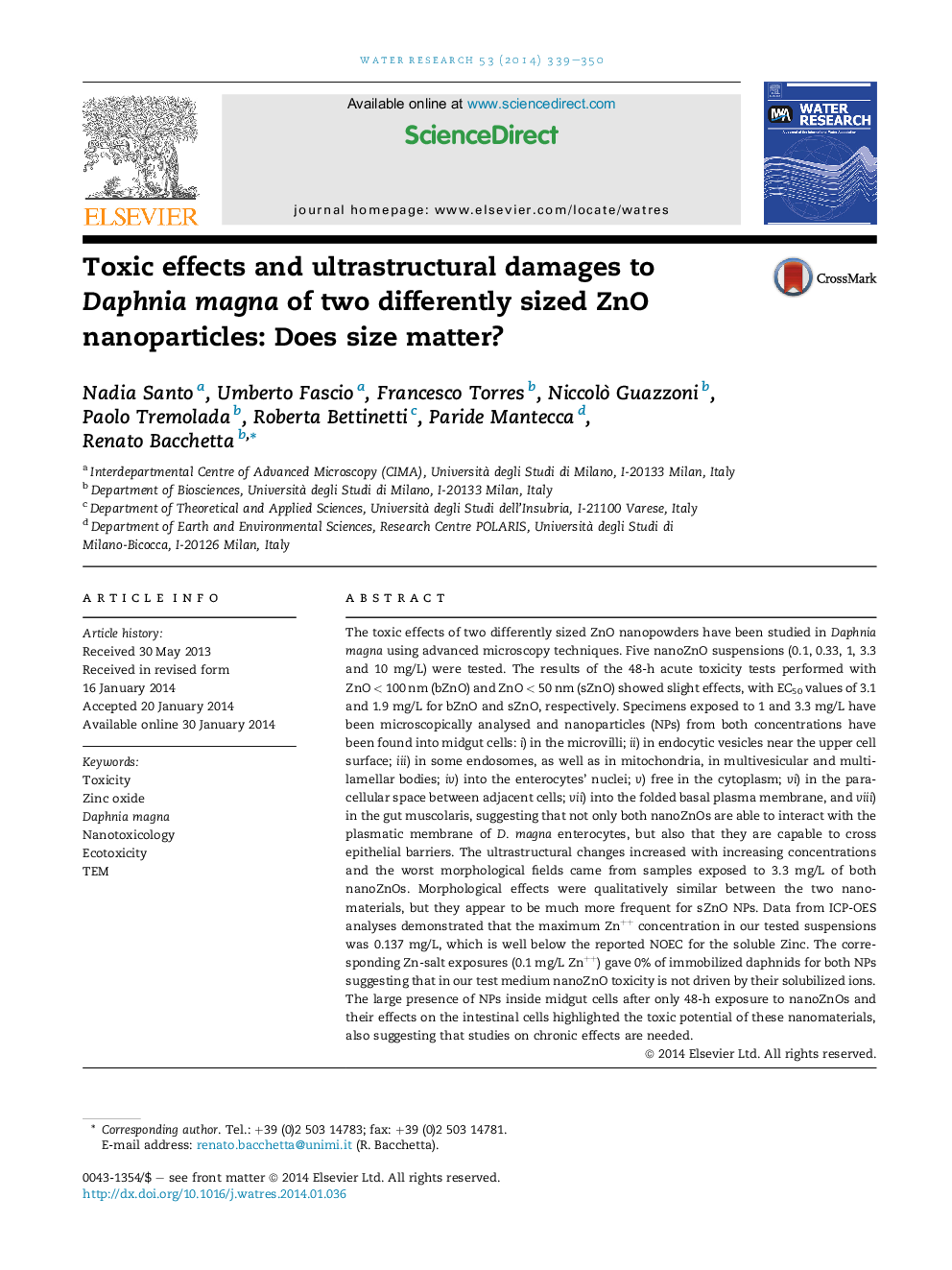| کد مقاله | کد نشریه | سال انتشار | مقاله انگلیسی | نسخه تمام متن |
|---|---|---|---|---|
| 4481614 | 1623115 | 2014 | 12 صفحه PDF | دانلود رایگان |

• The gastrointestinal system is the target of ZnO nanoparticles.
• NanoZnOs enter the intestinal cells by using different internalization pathways.
• Nanoparticles have been observed in all the cellular compartments, nucleus included.
• Small sized ZnO has more efficient activity than greater nanoparticles.
• The toxicity of both nZnOs is independent from the metal release.
The toxic effects of two differently sized ZnO nanopowders have been studied in Daphnia magna using advanced microscopy techniques. Five nanoZnO suspensions (0.1, 0.33, 1, 3.3 and 10 mg/L) were tested. The results of the 48-h acute toxicity tests performed with ZnO < 100 nm (bZnO) and ZnO < 50 nm (sZnO) showed slight effects, with EC50 values of 3.1 and 1.9 mg/L for bZnO and sZnO, respectively. Specimens exposed to 1 and 3.3 mg/L have been microscopically analysed and nanoparticles (NPs) from both concentrations have been found into midgut cells: i) in the microvilli; ii) in endocytic vesicles near the upper cell surface; iii) in some endosomes, as well as in mitochondria, in multivesicular and multilamellar bodies; iv) into the enterocytes' nuclei; v) free in the cytoplasm; vi) in the paracellular space between adjacent cells; vii) into the folded basal plasma membrane, and viii) in the gut muscolaris, suggesting that not only both nanoZnOs are able to interact with the plasmatic membrane of D. magna enterocytes, but also that they are capable to cross epithelial barriers. The ultrastructural changes increased with increasing concentrations and the worst morphological fields came from samples exposed to 3.3 mg/L of both nanoZnOs. Morphological effects were qualitatively similar between the two nanomaterials, but they appear to be much more frequent for sZnO NPs. Data from ICP-OES analyses demonstrated that the maximum Zn++ concentration in our tested suspensions was 0.137 mg/L, which is well below the reported NOEC for the soluble Zinc. The corresponding Zn-salt exposures (0.1 mg/L Zn++) gave 0% of immobilized daphnids for both NPs suggesting that in our test medium nanoZnO toxicity is not driven by their solubilized ions. The large presence of NPs inside midgut cells after only 48-h exposure to nanoZnOs and their effects on the intestinal cells highlighted the toxic potential of these nanomaterials, also suggesting that studies on chronic effects are needed.
Figure optionsDownload high-quality image (367 K)Download as PowerPoint slide
Journal: Water Research - Volume 53, 15 April 2014, Pages 339–350